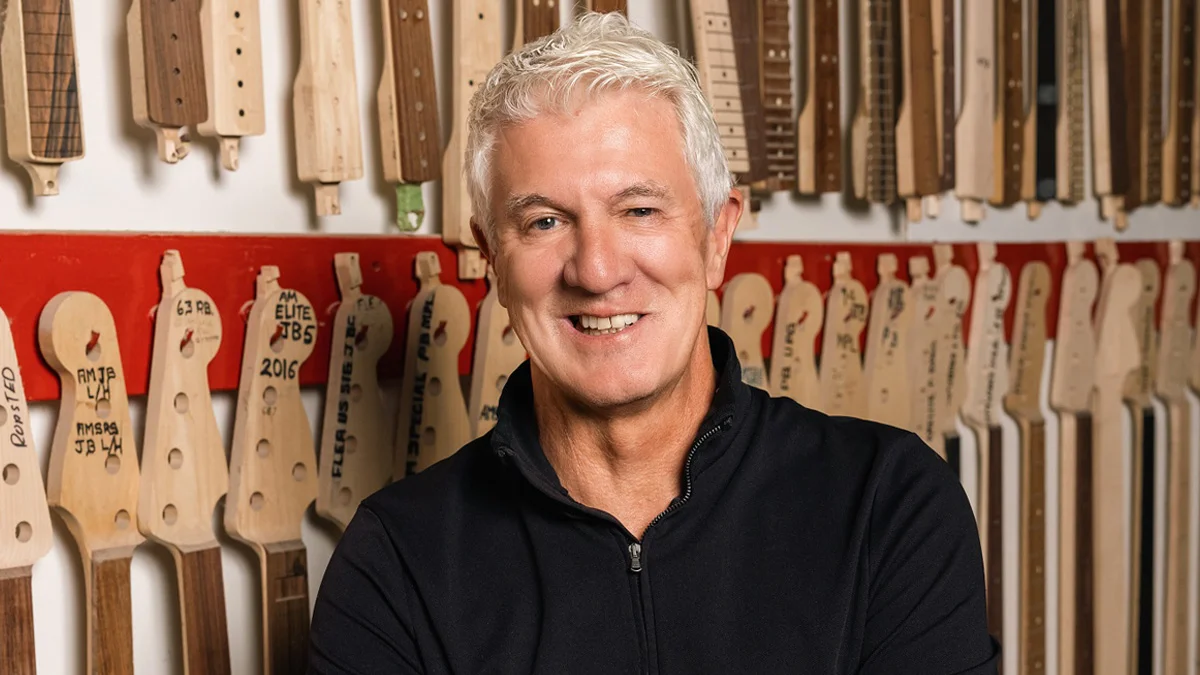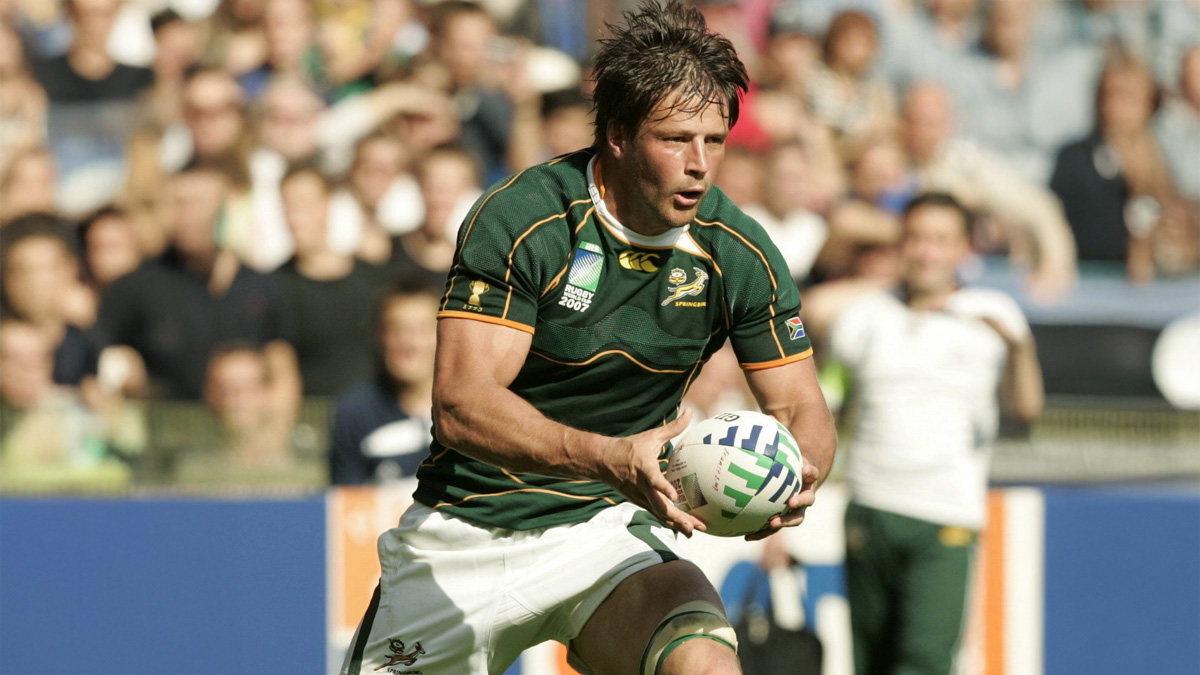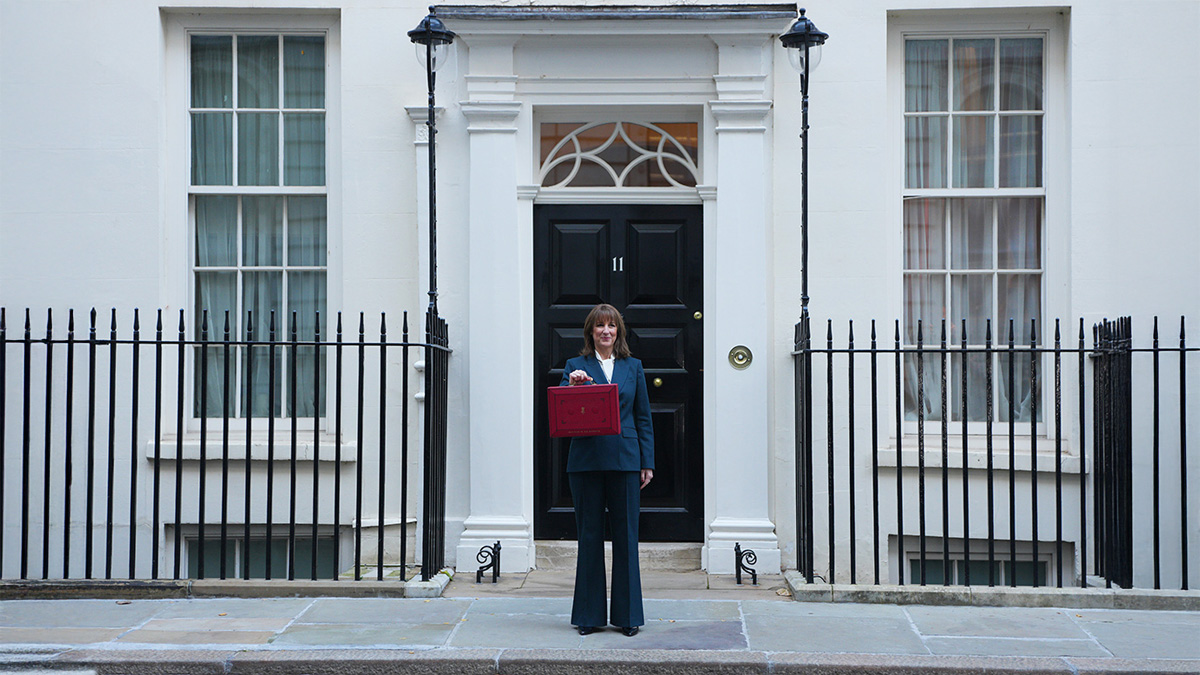
In an exclusive interview, we chatted with Andy Mooney, the CEO of Fender Musical Instruments Corporation and creator of the $45bn (£35.2bn) Disney Princess franchise. We met Andy at the Fender Artist Showroom in central London, where he told us how going where the opportunity is has enabled him to enjoy a distinguished career, why executives shouldn’t forget what $1 means to the average consumer, some handy advice he once received from Steve Jobs, and much more.
Can you tell us about your background and what were you doing before becoming CEO of Fender?
Prior to Fender, the bulk of my career was spent at two companies. I spent 20 years at Nike, joining as CFO in the UK at 25 and quickly moved into marketing. I moved to the US at 29 and ultimately became CMO. After leaving Nike, I spent 11 years at Disney, running the consumer products business under several CEOs.
I wanted to become a CEO, so I spent a couple of years at Quicksilver. This was a very difficult assignment, so I gave it two years and then the Fender opportunity came up, which is kind of my dream job because I never went to college as I wanted to be a professional musician. I played semi-professionally and because I worked very early in my teens and twenties, I was able to take the equivalent of a CPA.
So, when I went for a CFO role at 25, the only company crazy enough to hire me was Nike’s UK operation, which was worth around $10m (£7.8m) back then and the worldwide brand around $400m (£313m). When I left, it was worth $10bn (£7.8bn).
How was that first role at Nike?
Even though I was hired as CFO, I quickly realised that closing the books was the least important thing I had to do. The most important thing was buying shoes from parent companies six months in advance, which basically made me a department store buyer.
I had no background to do that intelligently, so I spent time on the road with reps, talking to dealers and figuring out what works for them. I spoke to distance runners too and quickly discovered they were running in Dunlop Green Flashes and causing themselves injuries, so they were willing to pay for technical running shoes from Nike that cost three times as much.
I also hung out with kids all over London as they were the trendsetters. They were buying high-cut leather basketball sneakers, although nobody was playing basketball in the UK. So, I would run to the CTO’s office every month and tell him to buy these shoes. He said we’d never sell them, and although I understood why he said that and the risk involved, I told him I’d done my homework and even bet him $100 of my own money each month that I was righter than he was.
After about six months of me collecting $100 a month from him, he pulled me into his office and gave me more freedom to buy what I wanted, although he did want to discuss money because every time I went to his office, I was asking for more of it. Finally, he said, “What newspapers do you take on the weekend.” After telling him what they were, he said he was glad he asked because we’re advertising your position this week. That’s how I found out I was going to be running marketing!
How does your experience at Fender compare to that?
A lot of it is déjà vu because when I started at Nike, it was a $400m (£313m) company and largely an independent mom-and-pop organisation and Fender was the same. So, a lot of the experience I’ve gained at Nike, I’ve applied here. Now, Fender is fast approaching $1bn (£782.8m), and although I don’t know that we’ll get to $10bn (£7.8bn), we’ll certainly be a lot bigger than $1bn by the time I’m finished.
So, what’s your plan for hitting that target?
When I joined Fender, we were spending about 4% of revenues ($16m) on marketing and we had no DTC operation. Now that we’re nearly a $1bn (£782.8m) company, 10% of revenues are spent on marketing, so around $100m. It’s all consumer-oriented through social media, and we’re using new product introductions coupled with elevated marketing, which drives not just industry growth but sheer growth.
We’ve seen profound growth in the consumption of recorded music through streaming, with close to a billion people paying to use a streaming service today, rapidly accelerated by Covid. We’re also seeing profound growth in live music experiences, particularly festivals, which are predominately guitar-based music. So, you’ve got these organic growth engines overlapping with what we’re doing.
We were growing in single digit/low double digits each year prior to Covid, and although growth has stabilised now, Covid basically accelerated our strategic plan by about two and a half to three years.
You’d think with Covid-19 stopping live performances, it might have had the opposite effect?
We estimate that 30 million incremental players picked up a guitar during Covid. Even with an abandonment rate of 90%, which is normal for anyone learning an instrument, the 10% that stick with it have a lifetime value of $10,000 each. Collectively, those three million committed players will spend $30bn (£23.5bn) over the next decade. So, with that Covid bubble on top of the organic growth, I feel really positive about the potential of the industry.
With consumer spending power being squeezed of late, have you seen sales increase for your cheaper guitar brand, Squier?
During Covid, most purchases were at entry-level price points. But as is the case with a lot of beginners coming in, purchases are mostly acoustic or electric guitars. I feel we have significant room to grow the acoustic segment. Our Acoustasonic range has been a hit, but I think it will be the next generation of acoustic players that start to really adopt it.
We’ve seen quite a bit of growth at the meat and potato end of the market as well, but there’s room to grow. There was a period over the last 18 months where lots of entry-level guitars were bought, but this has normalised again.
Is there added pressure when becoming CEO of a world-renowned brand with a huge history of success?
For sure. I’ve been fortunate to work with three brands with a very high emotional quotient. My indicator of a high emotional quotient is having consumers that are willing to tattoo the brand on their body and people do, whether it’s Mickey Mouse, the Nike swoosh, or a Stratocaster. That’s pretty telling when people are that committed, so it’s certainly a responsibility to manage a brand of this type.
How do you handle that pressure and what advice would you give to other business leaders during periods of extreme pressure?
I had the blessing to meet Steve Jobs in my first month at Disney as he was the CEO of Pixar before the acquisition. He asked me what I thought makes a good brand and I said it’s the cumulative effect of great products. He thought it was a decent answer but added that every single product you make is either a deposit or withdrawal in the bank of brand equity. So, I came to Fender with big company experience but also a deep knowledge of the product and a personal passion for it, which I think has been incredibly helpful.
When I moved to the US with Nike, I gave up on my dream to become a professional musician and sold all my gear, which I totally regret now! But after two years, one of my good friends, the guitar tech for Pete Townshend, Angus Young, Tom Petty and Eric Clapton, gave me a book on the history of Fender and told me to go out and buy a guitar again. I was around 29, 30 and decided to collect every guitar that was photographed in the book. So, by the time I joined Fender, I had about 35 Fender guitars and knew the brand inside and out.
I remember my first meeting with Fender staff in Scottsdale where I told my personal story: a long-tenured employee said, “I thought I was going to hate you after looking at your resume, but you might actually get it!”
What is the biggest challenge you’ve faced during your career and how did you manage to overcome it?
The biggest challenge here was in the first month of Covid when 90% of our dealers and all our factories were closed. It was terrifying. Within a week, we were working from home, and I was convinced it wouldn’t work. The executive team then scattered across the globe. We’d meet every morning by Zoom and I soon realised we were better connected as a team remotely than we were in person.
Fortunately for us, after the scare subsided, the demand started to go through the roof, and we were able to satisfy it better than our competitors. That was a huge adjustment. There were issues with our supply chain, transportation and raw materials, and we had to manage all of them.
In companies, is it common for there to be disputes when someone wants to push forward an idea but there is resistance from the executive team?
I think the belief is there, but they don’t come to the surface that often. Disney has a huge intern programme and I talk to them every year. I always get asked how I charted my career and I say, “I didn’t!” I just went where the opportunity was, whether that was categorically, geographically, or if I saw something. Even if it was a challenge politically, I went for it. There’s risk in that strategy, so it’s not for everyone, but I deeply believe that fear is the biggest inhibitor to personal growth because I came from nothing.
Do you think coming from nothing has given you an advantage in business?
I believe so, but it’s important that once executives acquire some wealth, they don’t cocoon themselves to the level where they forget what $1 means to the average consumer, or what the average consumer’s experience is. I know CEOs that haven’t flown commercial for the last three decades, live in a certain part of town and have a certain circle of friends. That’s dangerous for businesses in the consumer products space because you can easily lose touch.
The Player Series is your best-selling product range with more than half a million units sold. What is the secret behind its success?
As is the case with most brands, your most accessible price point has the most volume and the Player Series is the first Fender for most people because there is a psychological difference for most people between buying a Squier by Fender and an actual Fender.
The other thing is we conducted what I believe is the most comprehensive piece of research ever done in the industry back in 2015 and that revealed the statistics that have guided the company since. One was 45% of the guitars we sell in a year are to first-time players. We also discovered that 50% of the first-time players were women and there was a 90% abandonment rate for first-time players. So, there was a big retention problem.
We also discovered the learning model had changed from in-person to online subscriptions or free online resources like YouTube. That resulted in us moving further into the digital space and inspired us to create Fender Play, which has been very important for bringing more new players in.
Many guitar products have been inspired by Fender designs, but have you ever taken inspiration from other guitar manufacturers when designing products?
With the utmost respect to other companies, I borrow ideas all the time but never in the industry I’m working in. For example, when I was at Nike, I borrowed from BMW. They were very skilled at taking design iconography and moving it through their different models, which helped me to construct a footwear line along the same principles.
In the case of Fender, we borrow paint ideas, a practice which has been done since Leo Fender’s day. This entails picking paint colours from the auto industry because they tend to be the most desirable at any point in time. Interestingly, when I talk to people in the auto industry, they borrow from the lingerie industry!
It used to amaze me at Nike how everybody ended up with the same colour palette. It turns out there are three or four colour agencies in the world and all the fashion companies go to them and are told which colours will be hot next Spring!
Lastly, Fender and Squier products are manufactured in various countries, including the US, Japan, Mexico, Indonesia and China. Is there a possibility of them ever being manufactured in the UK?
There was a point in time when you didn’t need to put the country of origin on a guitar as you could tell where it came from based on its quality. But I think the quality of the product in our regions has elevated and younger consumers don’t really care about country of origin in the same way a lot of English people still do.
I think the key now is to have logical stepping stones in the features of each price level independent of where that guitar is coming from. So, I honestly don’t see a scenario where we would manufacture in the UK or if it would be cost-efficient to do so, but never say never.
Related and recommended

Healthcare and income tax require radical reform, but the Budget revealed little ambition to tackle the big issues

Bob Skinstad’s journey from rugby prodigy to business leader is shaped by scrutiny, setbacks and second chances

After a decade as editor-in-chief, Katharine Viner is using her business acumen to reinvent The Guardian

The prime minister and chancellor may be safe for now but Cabinet ministers believe it’s a case of when, not if, they fall

